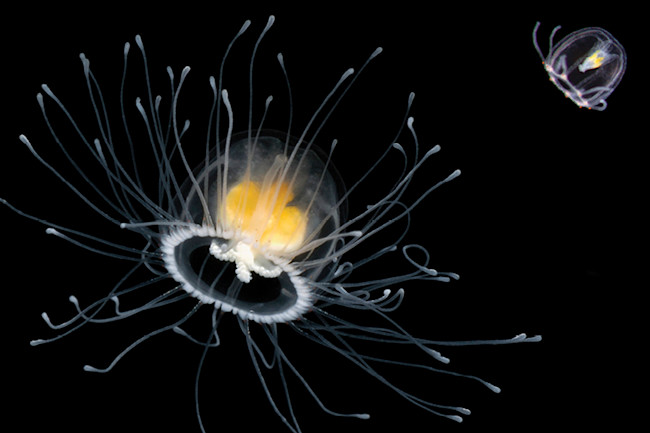Like all the jellyfishes, Turritopsis dohrnii begins life as a larva named a planula, which develops from a fertilized egg. A planula swims at first, then settles itself on the seafloor and grows into a cylindrical colony of polyps. These polyps ultimately spawn free-swimming and then grow into a genetically identical medusae—the animals that we recognize as jellyfish. They then grow to adulthood in a matter of weeks.

When fully grown, Turritopsis dohrnii is only about 4.5 mm (0.18 inches) across, smaller than your nail. Its bright-red stomach is visible in the middle of the transparent bell, and the jellyfish’s edges are lined with up to 90 white sleeky tentacles.
These tiny, transparent creatures have extraordinary survival skills. In response to any physical damage or starvation, they take a leap back and transform back into a polyp. This is a process that looks remarkably like immortality, the born-again polyp colony eventually buds and releases medusae that are genetically identical to the injured adult. In fact, since this phenomenon was first observed, the species was come to be called “the immortal jellyfish.”
What can be the probable cause of death for this jellyfish?
The only known way these immortal jellyfishes can actually die is if they get consumed by another fish or if a disease strikes the jelly. However, there are still many mysteries surrounding this Turritopsis Dohrnii species. While the process of reverting from its adult-phase to a polyp was observed several times, it hasn’t been observed yet in nature, and it is known to the mankind only in the laboratory environments.
Know more about this creature in the below video!